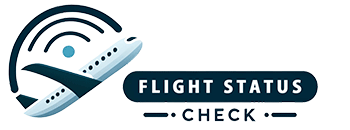Flying can be an exciting and convenient way to travel, whether it’s for business or pleasure. However, flight delays and cancellations can quickly turn a smooth journey into a stressful experience. That’s why it’s important to stay informed about your flight status. In this article, we’ll discuss how to check your flight status, what factors can affect it, and provide some tips for dealing with delays and cancellations.
Checking Your Flight Status
There are several ways to check the status of your flight. One of the easiest ways is to use the airline’s website or mobile app. Simply enter your flight number or departure and arrival cities to access real-time updates. Many airlines also offer the option to receive notifications about any changes to your flight status, such as delays or gate changes.
Another option is to use a third-party flight tracking website or app. These platforms aggregate flight data from various sources to provide comprehensive information about scheduled, in-air, and landed flights. Some even offer additional features, such as the ability to track a specific flight or see its current position on a map.
Factors Affecting Flight Status
Several factors can impact the status of a flight, leading to delays or cancellations. Weather is a common culprit, with conditions such as thunderstorms, heavy snow, or strong winds causing disruptions to flight schedules. Air traffic congestion and technical issues with the aircraft or airport facilities can also play a role in delaying flights.
Airlines may also experience delays due to operational issues, such as crew shortages, maintenance problems, or scheduling conflicts. In some cases, a flight may be delayed or cancelled due to security concerns or other unforeseen events, such as a medical emergency or a passenger’s disruptive behavior.
Dealing with Delays and Cancellations
While flight delays and cancellations can be frustrating, there are a few steps you can take to minimize the impact on your travel plans. First and foremost, it’s important to stay informed about your flight status. Check for updates regularly, and be sure to sign up for notifications if your airline offers this service.
If you experience a delay or cancellation, approach the airline staff for assistance. They may be able to provide information about alternative flights, rebooking options, or compensation for the inconvenience. Depending on the circumstances, you may be entitled to amenities such as meal vouchers, hotel accommodations, or transportation to and from the airport.
It’s also a good idea to be proactive and consider alternative travel arrangements. For example, if your flight is delayed by several hours, you might explore the option of booking a different flight with another airline. Keep in mind that some travel insurance policies may cover expenses related to flight delays and cancellations, so be sure to review your policy details.
Tips for Managing Flight Delays
To cope with flight delays, it’s important to stay calm and flexible. Use the extra time to explore the airport, catch up on work or reading, or enjoy a meal or snack. Many airports offer amenities such as lounges, shops, and restaurants to make the waiting experience more comfortable.
If you have connecting flights, be sure to keep your connecting airline informed about your delayed arrival. They may be able to assist you with rebooking or finding alternative travel options. In some cases, it may be possible to arrange for a longer layover to avoid missing your connecting flight.
Finally, remember to communicate with your friends, family, or colleagues about any changes to your travel plans. Keeping them informed can help minimize any inconvenience or confusion caused by a delayed or cancelled flight.
Understanding Flight Status Codes
When checking your flight status, you may come across certain codes that indicate the current condition or progress of your flight. Here are some common codes and their meanings:
– “On Time” or “Arrived On Time”: Your flight is operating according to its scheduled departure or arrival time.
– “Delayed”: Your flight is experiencing a delay, and a new departure time will be provided once available.
– “Cancelled”: Your flight has been cancelled and will not operate as scheduled.
– “Diverted”: Your flight has been redirected to a different airport due to unforeseen circumstances.
It’s important to understand these codes to accurately interpret your flight status and make informed decisions about your travel plans. Keep in mind that flight statuses can change frequently, so it’s essential to stay updated on the latest information.
Conclusion
Staying informed about your flight status is an essential part of air travel. By checking your flight status regularly and being prepared for potential delays or cancellations, you can minimize the impact of disruptions on your travel plans. Remember to stay calm, communicate with airline staff, and consider alternative travel options if needed. With the right approach, you can navigate flight delays and cancellations with confidence and ease. Safe travels!

Leave a Reply